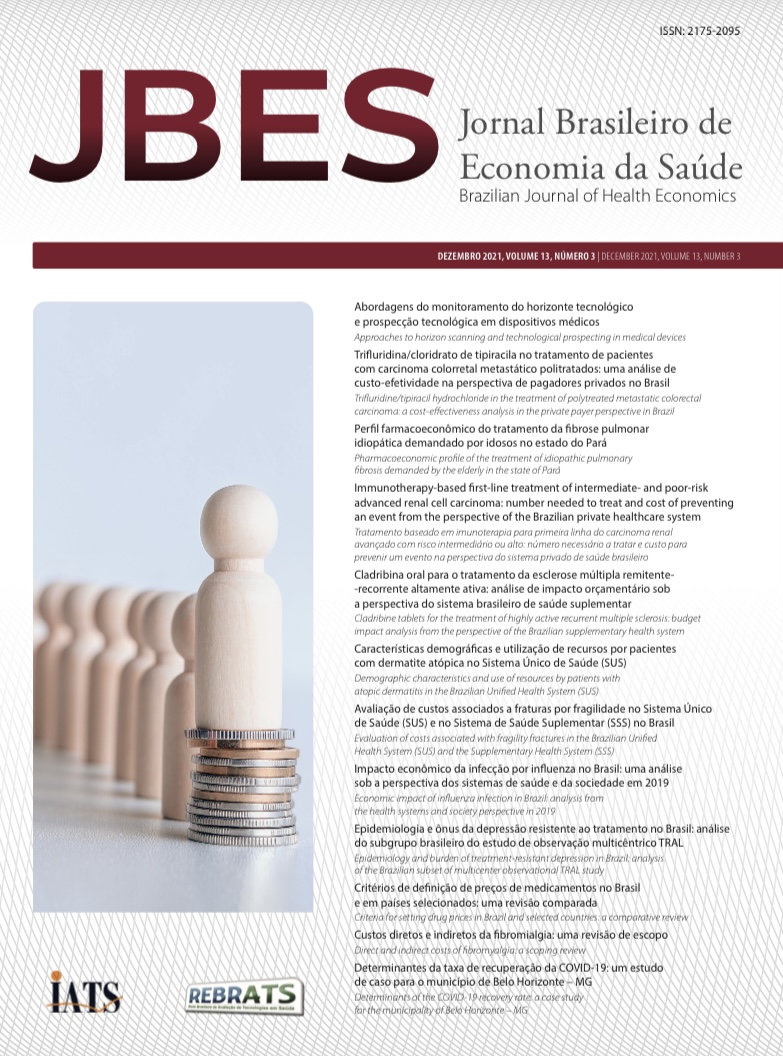Evaluation of costs associated with fragility fractures in the Brazilian Unified Health System (SUS) and the Supplementary Health System (SSS)
DOI:
https://doi.org/10.21115/JBES.v13.n3.p288-99Keywords:
bone fractures, osteoporosis, osteoporotic fractures, costs and cost analysisAbstract
Objective: To estimate the resources utilization, and direct medical costs associated with fragility fractures, from the perspectives of the Unified Healthcare System (SUS) and Supplementary Healthcare System (SSS) in Brazil, through a microcosting approach. Methods: A literature review was conducted regarding the management of fragility fractures (proximal femur, distal radius third of the radius and vertebra) to determine the pattern of resource utilization. The methods were validated by two experts. Only direct costs were considered, from the perspectives of SUS and SSS as paying sources, based on official price lists appropriate to each cost category and perspective. Public bid databases provide the actual market prices for the SUS perspective. Results: The average final costs attributed to the surgical treatment of the proximal femur fractures from the perspectives of SUS and SSS were BRL 5,612.13 and BRL 52,384.06, respectively. For fractures of the distal radius, the average costs per patient for conservative and surgical treatment were BRL 661.53 and BRL 1,405.21, respectively, from the SUS perspective, and BRL 8,917.75 and BRL 21,689.92, from the private perspective. For vertebral fractures, the cost per patient for conservative and surgical treatment were BRL 1.165,93 and BRL 9.775,56, respectively, in the SUS scenario and BRL 15.053,32 and BRL 54.596,78, respectively, under the SSS perspective. Conclusions: In Brazil, direct costs of fragility fractures are substantial, justifying not only clinical but also economic concerns for payers and society.






